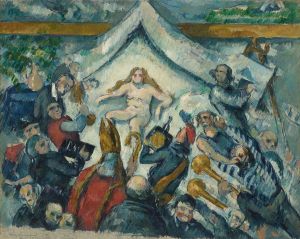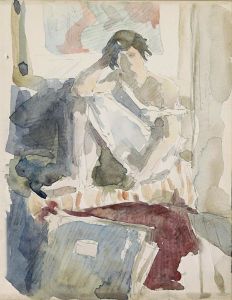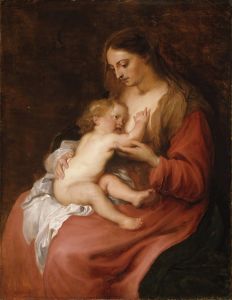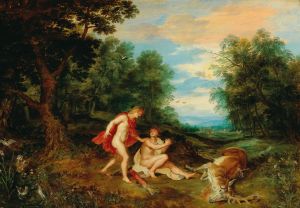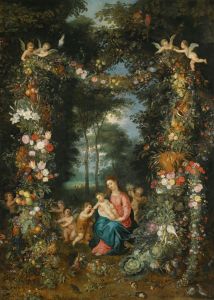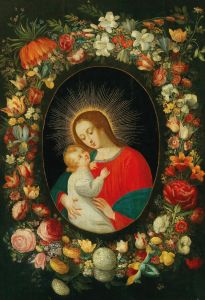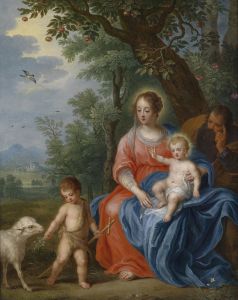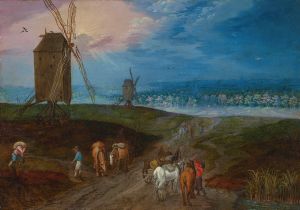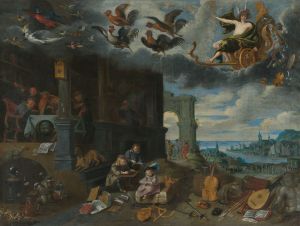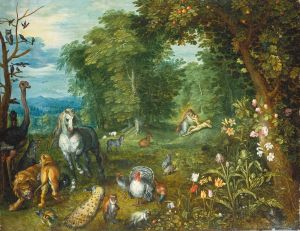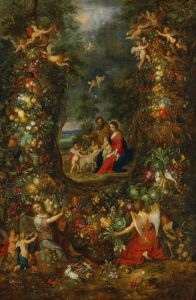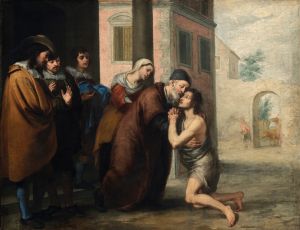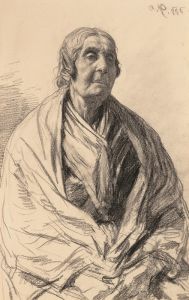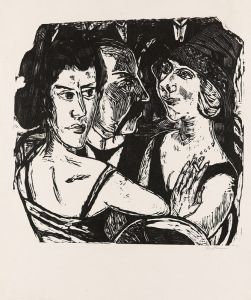
The Virgin and Child with the Infant Saint John the Baptist surrounded by a garland of flowers
A hand-painted replica of Jan Brueghel the Younger’s masterpiece The Virgin and Child with the Infant Saint John the Baptist surrounded by a garland of flowers, meticulously crafted by professional artists to capture the true essence of the original. Each piece is created with museum-quality canvas and rare mineral pigments, carefully painted by experienced artists with delicate brushstrokes and rich, layered colors to perfectly recreate the texture of the original artwork. Unlike machine-printed reproductions, this hand-painted version brings the painting to life, infused with the artist’s emotions and skill in every stroke. Whether for personal collection or home decoration, it instantly elevates the artistic atmosphere of any space.
"The Virgin and Child with the Infant Saint John the Baptist surrounded by a garland of flowers" is a notable painting by Jan Brueghel the Younger, a Flemish Baroque painter known for his detailed landscapes, allegorical scenes, and collaborations with other artists. Born in 1601, Jan Brueghel the Younger was the son of Jan Brueghel the Elder and the grandson of Pieter Bruegel the Elder, both of whom were prominent figures in the Flemish art scene. Jan Brueghel the Younger continued the family tradition, maintaining the high standards of craftsmanship and artistic innovation established by his predecessors.
This particular painting exemplifies the collaborative nature of Flemish art during the Baroque period. It is a prime example of the genre known as "garland paintings," which typically feature a central religious or mythological figure surrounded by a lush, detailed garland of flowers. These works often involved collaboration between a figure painter and a specialist in still life or floral painting. In this case, Jan Brueghel the Younger, renowned for his skill in depicting flowers and natural elements, likely painted the intricate garland, while the figures of the Virgin, Child, and Saint John the Baptist may have been executed by another artist, possibly from the circle of Rubens or another contemporary figure painter.
The painting depicts the Virgin Mary holding the Christ Child, with the Infant Saint John the Baptist nearby. This trio is a common subject in Christian art, symbolizing the close relationship between Jesus and John the Baptist, who is considered his forerunner. The inclusion of the garland of flowers serves not only as a decorative element but also as a symbol of the divine and the beauty of creation, reflecting the Baroque era's interest in the natural world and its spiritual significance.
Jan Brueghel the Younger's work is characterized by meticulous attention to detail, vibrant color palettes, and a harmonious composition. In "The Virgin and Child with the Infant Saint John the Baptist surrounded by a garland of flowers," these elements come together to create a visually rich and thematically profound piece. The flowers in the garland are rendered with precision, showcasing Brueghel's expertise in botanical illustration and his ability to imbue natural elements with symbolic meaning.
The painting is a testament to the collaborative spirit of the time, as well as to the Brueghel family's enduring legacy in the art world. It reflects the blending of religious themes with the burgeoning interest in the natural sciences and the beauty of the natural world, which were hallmarks of the Baroque period. Through works like this, Jan Brueghel the Younger contributed to the continuation and evolution of Flemish painting, ensuring that the Brueghel name remained synonymous with artistic excellence and innovation.
Today, "The Virgin and Child with the Infant Saint John the Baptist surrounded by a garland of flowers" is appreciated not only for its aesthetic qualities but also for its historical significance, offering insight into the collaborative practices and thematic interests of 17th-century Flemish artists.





